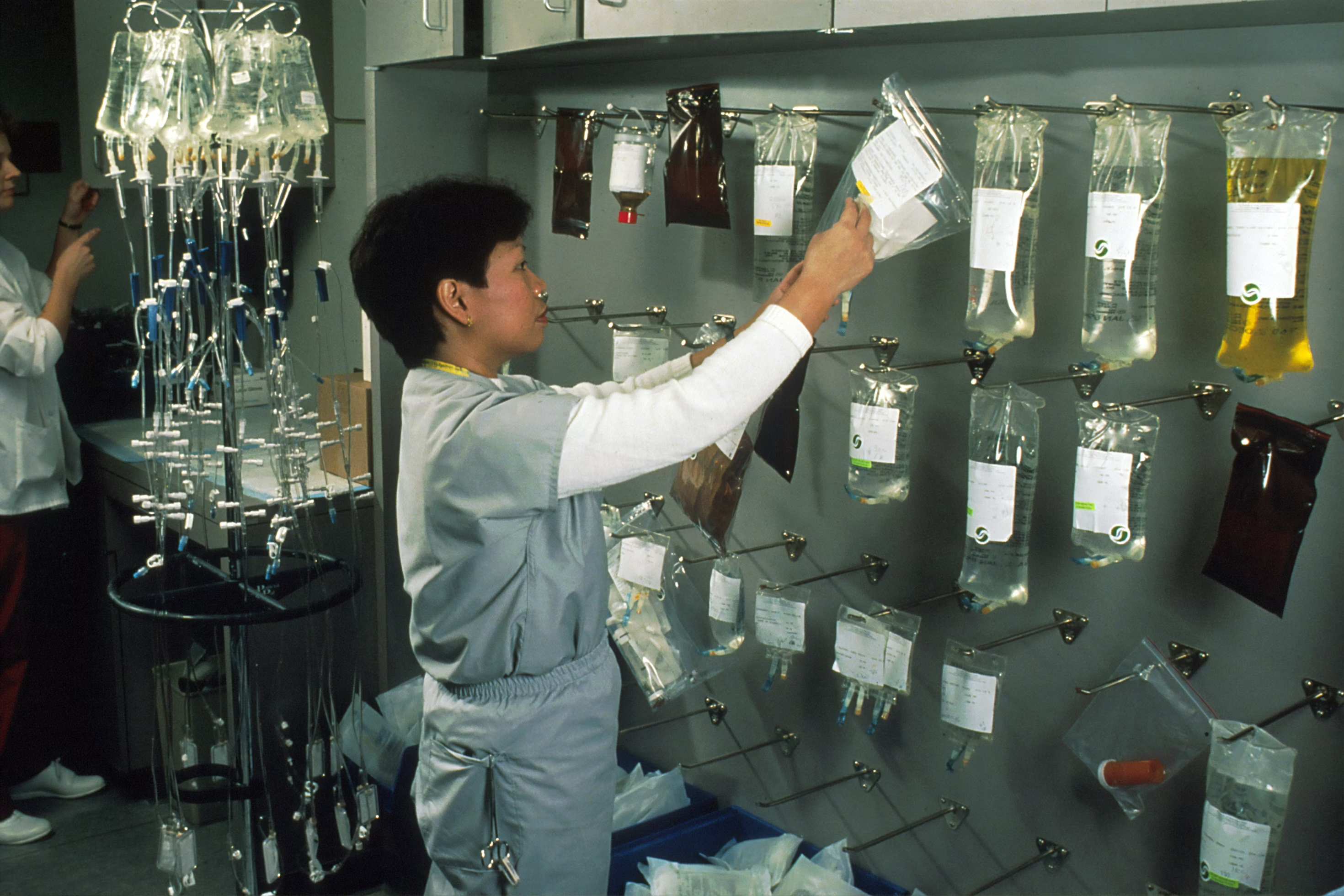I remember the moment I first learned about PFAS, those so-called “forever chemicals.” It felt like uncovering a hidden threat lurking in my kitchen, my closet, even the water coming from my tap. As a mother and consumer-safety advocate in my mid-50s, I was filled with scientific curiosity – and a surge of protective concern. How could something so small be causing such big problems for our health and environment? In this post, I’ll share what I’ve discovered about PFAS: where they come from, the serious health risks they pose, and practical steps we can all take to keep our families safe.
What Are PFAS and Why Are They Called “Forever Chemicals”?
PFAS (per- and polyfluoroalkyl substances) are a group of over 15,000 human-made chemicals known for their remarkable ability to resist heat, oil, stains and water. These properties made PFAS popular in countless products over the decades – from nonstick cookware and stain-proof carpets to food wrappers and even cosmetics. Unfortunately, the same chemistry that makes PFAS so useful also makes them stick around virtually forever. They don’t break down easily in the environment or our bodies, earning them the nickname “forever chemicals.” In fact, PFAS can linger in human blood and organs for many years (some can remain for decades before leaving the body). Because they break down so slowly, PFAS have accumulated in the blood of most Americans today.
Every time we use a nonstick pan or wear a water-resistant jacket, we might be coming into contact with PFAS. Each tiny exposure on its own might seem harmless. But these chemicals build up over time in our bodies. The more they accumulate, the greater the chance they can contribute to chronic health problems. This persistence is what makes PFAS a serious health concern and why scientists and health experts are sounding the alarm about them.
How PFAS Enter Our Daily Lives
PFAS have a way of sneaking into our lives through everyday habits and products. Understanding how exposure happens is the first step in protecting ourselves. Here are the main pathways PFAS get into our bodies:
- Contaminated Water: One of the most common sources of PFAS exposure is the water we drink. PFAS from manufacturing plants and military bases (where firefighting foams containing PFAS were used) have seeped into groundwater and rivers. Communities near chemical plants or airfields have discovered PFAS in their tap water, sometimes at worrisome levels. When we drink or cook with this water, the chemicals enter our bloodstream. They bind to proteins and tend to accumulate in organs like the liver and kidneys, meaning that even low levels in water can build up in our bodies over time.
- Food and Food Packaging: PFAS can also hitch a ride into our meals. Grease-resistant fast-food wrappers, microwave popcorn bags, and some take-out containers are often coated with PFAS to prevent oil from soaking through. Over time, those chemicals can leach into the food we then eat. In addition, some produce or fish can contain PFAS if they were grown or caught in polluted water. For example, fish from certain rivers or lakes near industrial sites have been found with elevated PFAS levels. So if you’re consuming locally caught fish from a contaminated area, PFAS may be making its way onto your dinner plate.
- Household Products and Dust: Many consumer products in our homes have been treated with PFAS to make them waterproof, stain-resistant or nonstick. Nonstick pots and pans (often made with Teflon-like coatings), waterproof apparel, stain-resistant carpets and furniture, and even some pizza boxes all may contain PFAS. Using these items doesn’t mean you’ll immediately get a dose of chemicals, but wear and tear can release PFAS particles into our air and dust. For instance, a scratched nonstick pan can shed microscopic bits of its PFAS coating into your food, especially at high cooking temperatures. Fabrics and carpets treated with PFAS can slowly emit or shed these chemicals onto our skin or into household dust that we unknowingly breathe in or swallow. Over months and years, these small exposures add up.
- Cosmetics and Personal Care: It surprised me to learn that PFAS are lurking in some makeup and personal care products as well. Certain long-lasting lipsticks, foundations, mascaras, and lotions contain PFAS compounds to improve wear or texture. When we apply these products to our skin (or lips and eyes), tiny amounts of PFAS can be absorbed or even ingested. While the beauty industry doesn’t advertise this, studies have found PFAS present in a range of cosmetics. It’s an unsettling thought: a product we use to take care of ourselves might be introducing toxic “forever chemicals” into our body.
In short, PFAS have quietly infiltrated the most ordinary aspects of our daily routine – the water we drink, the food we eat, the products we use. This pervasive exposure is difficult to avoid completely, and it’s why nearly all of us have some PFAS in our system. But why does it matter? The real concern is what these chemicals can do to our health once they’re inside us.

PFAS and Cancer Risk
One of the gravest concerns about PFAS is their potential to cause cancer. Growing research connects PFAS exposure to various cancers, and this connection has scientists and doctors deeply worried. These chemicals can disrupt our normal cell functions in multiple ways – they can mess with our metabolism and immune function, damage DNA, and interfere with hormones that usually help keep cell growth in check. Over time, those changes create an environment where cancers are more likely to form.
The strongest evidence so far links PFAS to kidney and testicular cancer. In communities with PFAS-contaminated water, studies have found higher rates of these cancers compared to unexposed areas. Alarming new research in 2022 was also the first to connect PFAS exposure to liver cancer in humans. While we are still learning about all the cancers PFAS might trigger, these findings are enough to raise a red flag. In fact, international health agencies have classified at least one type of PFAS (PFOA) as possibly carcinogenic to humans. Even the U.S. Environmental Protection Agency acknowledges there is “suggestive evidence” that PFOA can cause cancer.
No one wants to hear that their nonstick frying pan or drinking water might contribute to cancer. But we cannot ignore the signals emerging from decades of PFAS use. Cancer is a life-changing diagnosis, and the notion that something we never even knew was in our environment could raise our risk is both infuriating and motivating. It motivates us to push for change – to get these toxic substances out of our water, our products, and our bodies for good.
Immune System Under Threat
Beyond cancer, PFAS are known to undermine the immune system – our bodies’ natural defense against disease. Research has found links between PFAS exposure and immune system suppression. In simple terms, these chemicals can make it harder for our bodies to fight off infections and respond properly to vaccines or illnesses. For example, some studies suggest that people (especially children) with higher PFAS levels have weaker responses to common vaccines, meaning they might not be as well protected even after immunization. While research is ongoing, it’s a disturbing possibility that PFAS could leave us more vulnerable to everything from the flu to COVID-19 by quietly sabotaging our immune defenses.
For those of us in our 30s through 70s, a strong immune system is key to staying healthy as we age. The idea that “forever chemicals” might be chipping away at our immunity is yet another reason to take PFAS seriously. We should not accept anything in our consumer products that could weaken our families’ health protections from the inside out.
Hormonal Havoc: PFAS and the Endocrine System
PFAS don’t just linger in the body – they interfere once they’re there. One major way is by disrupting our endocrine system, the delicate hormonal balance that regulates everything from metabolism and energy levels to mood and organ function. PFAS can mimic or block natural hormones. For instance, they can interfere with thyroid hormones, which are crucial for metabolism and brain development. Studies show PFAS exposure is associated with reduced levels of thyroid hormone and can contribute to thyroid diseases. Many people (especially women) in mid-life already struggle with thyroid issues; PFAS chemicals in our environment may be one hidden factor making those problems more common.
Messing with hormones doesn’t stop at the thyroid. By throwing endocrine signals into disarray, PFAS have been linked to metabolic disorders like obesity and diabetes. One notable study found that individuals whose drinking water contained PFAS gained more weight over time than those without PFAS exposure, even when diet and other factors were similar. In plain terms, these chemicals might cause our bodies to pack on extra pounds or alter how we metabolize fats and sugars. They’ve also been connected to elevated cholesterol levels, another marker of metabolic health we all watch as we age. It’s deeply unsettling that an environmental pollutant could be nudging our weight or cholesterol upward without us knowing.
The hormonal havoc caused by PFAS is insidious – we might not see it happening day to day, but over years the effects can manifest as thyroid dysfunction, weight gain, or other metabolic troubles. This is a silent threat to our well-being, and it underscores why reducing PFAS exposure is so important for our long-term health.
Reproductive and Developmental Dangers
PFAS chemicals can even affect our most personal and fundamental health matters: reproduction and development. Research has linked PFAS exposure to a variety of reproductive problems. For couples trying to conceive, PFAS may contribute to fertility issues, making it harder to get pregnant. And for those who do become pregnant, these chemicals have been associated with complications such as preeclampsia (dangerously high blood pressure during pregnancy) and other pregnancy-induced hypertension disorders. PFAS can also disrupt reproductive hormones – altering levels of estrogen, testosterone and other hormones critical for reproductive health. These disruptions could potentially affect everything from menstrual cycles to menopause timing.
Perhaps most heartbreaking, PFAS exposure appears to impact babies and children during critical developmental windows. When a pregnant woman has PFAS in her bloodstream, those chemicals can cross the placenta and reach the fetus. Studies have found that babies born to mothers with higher PFAS levels tend to have lower birth weights on average. As children grow, continued PFAS exposure (through water, food, etc.) has been linked to developmental delays and other issues. For example, researchers have observed trends like children hitting puberty earlier, experiencing changes in behavior or attention, and even differences in bone development in connection with PFAS. There is also concern that PFAS could dampen children’s immune responses, making them less resilient to infections and vaccines (a worry that overlaps with the immune issues mentioned earlier).
These findings weigh heavily on me as a parent. The thought that children – even before they take their first breath – could be exposed to toxic chemicals that impede their healthy growth is both infuriating and motivating. Infuriating, because it feels like an injustice to our kids. Motivating, because it pushes us to demand a cleaner, safer world for the next generation. No child should carry a burden of industrial chemicals in their body from birth. Reducing PFAS in our environment is an investment in healthier families for years to come.
Liver Damage and Cholesterol Concerns
Another set of health risks from PFAS centers on the liver and metabolic health. The liver is our body’s filtration and detox organ, so it’s especially troubling that PFAS accumulate there and can cause harm. Recent studies have drawn a worrisome link between PFAS exposure and non-alcoholic fatty liver disease (NAFLD), a condition where excess fat builds up in the liver and can lead to inflammation and liver damage. In one 2023 study, people with the highest PFAS levels were 4.5 times more likely to develop fatty liver disease than those with the lowest levels. This was a striking finding – it suggests PFAS could be a significant unseen driver behind the surge in NAFLD cases, a disease that can progress to cirrhosis or liver cancer in severe cases.
PFAS may also be silently affecting one of the most common health issues adults face: high cholesterol. Research has noted links between certain PFAS (like PFOS and PFNA) and elevated cholesterol levels in people. High cholesterol is a major risk factor for heart disease, so this connection raises yet another red flag. If exposure to PFAS is nudging our cholesterol upward, it means these chemicals might be contributing to heart problems down the line without us realizing it.
When we consider liver and cholesterol impacts together with the other health issues, a picture emerges of PFAS as a multi-system threat. These chemicals don’t just target one part of us – they can affect numerous aspects of our health, from the organs that detoxify our bodies to the very blood that circulates in our veins. It’s a sobering reality, but it strengthens our resolve to reduce exposure and push for change.
Expert Perspective: Dr. Shannon L. Fitzgerald’s Findings
Much of the health impact information shared above is echoed in the work of Dr. Shannon L. Fitzgerald, a toxicologist and Doctor of Pharmacy who has studied PFAS extensively. In her expert-reviewed guide published on Drugwatch.com, Dr. Fitzgerald highlights the strong links between PFAS exposure and conditions such as kidney, liver, and testicular cancer, as well as immune dysfunction and hormonal disruption.
Her findings reinforce growing concerns about PFAS as endocrine disruptors, capable of interfering with thyroid hormones, reproductive health, and fetal development. The guide emphasizes that PFAS accumulate over time, even in low doses, and can contribute to long-term chronic illnesses.
For a deeper look into the scientific evidence behind these risks, read Dr. Fitzgerald’s full article on Drugwatch: PFAS Health Effects.
Practical Steps to Reduce PFAS Exposure
Reading about the wide-ranging risks of PFAS can feel overwhelming, but there is good news: we are not powerless. While it’s true we can’t instantly eliminate all PFAS around us, we can take practical steps to minimize our exposure and protect our families. I often remind myself and others that even small changes, added up over time, can make a big difference. Here are some concrete actions you can start today:
- Check Your Water: If you suspect PFAS might be in your drinking water (for example, if you live near a known contamination site or rely on well water), consider getting your water tested. Installing a good home water filter can dramatically reduce PFAS in your tap water. Filters using activated carbon or reverse osmosis are effective at removing PFAS from drinking water. Clean water is fundamental, so this is a great first line of defense.
- Be Mindful with Food & Packaging: Cut down on foods that come in grease-resistant packaging, like some fast food wrappers or microwave popcorn bags, as these often contain PFAS that can migrate into the food. Whenever possible, opt for fresh or home-cooked meals and use your own glass or stainless containers. Also, pay attention to where your seafood comes from. Fish from PFAS-polluted waters can carry those chemicals into your diet. If you enjoy fishing or eating locally caught fish, check for any advisories about contamination. A few simple swaps in how we shop and eat can limit a major PFAS source.
- Avoid Stain-Resistant Fabrics: Many textiles labeled as stain-proof, water-resistant, or wrinkle-free are treated with PFAS. To reduce contact, avoid buying clothing, upholstery or carpeting with these treatments unless absolutely necessary. There are PFAS-free alternatives for rain gear and furniture these days. If a product proudly claims to repel water or grease, that’s a clue it could contain PFAS – consider looking for versions that say “PFAS-free” on the label. Choosing natural materials or untreated options for things like sofas, rugs, and jackets will cut down on the PFAS in your home environment.
- Choose Safer Cookware: Swap out Teflon and other PFAS-coated nonstick cookware for safer options. Traditional nonstick pans can release PFAS, especially when scratched or overheated. Instead, cook with stainless steel, cast iron, or PFAS-free ceramic cookware. These options might require a bit more oil or care to prevent sticking, but they are much safer for long-term use. If you do keep using nonstick pans, be sure to replace them at the first sign of peeling or wear – and keep the heat to medium to reduce emissions. But ultimately, phasing PFAS out of your kitchen is one of the best moves for your health.
- Watch Out for PFAS in Cosmetics: Check the ingredient labels on your makeup and personal care products. PFAS often hide under chemical names – look for terms like “PTFE” (the Teflon chemical) or any ingredient with “fluoro” in it (for example, perfluorooctane sulfonate is a PFAS). If they’re present, it might be worth finding a cleaner alternative. Some brands now advertise PFAS-free cosmetics due to rising consumer awareness. Given that PFAS have been found in creams, cosmetics and even dental floss, scrutinizing these everyday items is wise. Our skin can absorb chemicals, and we certainly don’t want to be applying “forever chemicals” directly to our bodies day after day.
Remember, you don’t have to do everything perfectly. The goal is to reduce your overall PFAS burden bit by bit. Maybe you start by getting a water filter and swapping out a few pans, then gradually replace other items. Every step that cuts down your exposure is a step in the right direction. While we might not control every source of PFAS, focusing on these key areas can significantly lower the risks we and our loved ones face.
Conclusion: Standing Up for a PFAS-Free Future
Writing about PFAS – these stubborn “forever chemicals” – inevitably stirs up a mix of emotions in me. I feel anger that companies were allowed to use toxic substances in everyday products without consumers’ knowledge. I feel concern for the health of my family, friends, and community. But I also feel hope and determination. We have faced down invisible threats to public health before, from lead in paint to secondhand smoke, and we have prevailed through awareness and action. PFAS are no different.
Armed with knowledge, we can protect ourselves and our families. By making conscious choices in what we buy and use, we send a powerful message to manufacturers that we won’t tolerate hidden poisons in our homes. And it’s not just about personal choices – it’s about collective action. We can advocate for greater transparency and accountability from the companies that produce and use PFAS. This means pushing for clearer labeling and full disclosure of chemicals in consumer goods. It means supporting policies that limit PFAS in our water and environment, and demanding that our leaders put public health above corporate secrecy.
Finally, I encourage you to share what you’ve learned with others. The more people know about PFAS, the stronger our call for a cleaner, safer world becomes. These chemicals may be persistent, but so are we. Together, let’s work towards eliminating PFAS from our products and environment, so that future generations can drink water, eat food, and use everyday items without fear of toxic forever chemicals. It’s an ambitious goal – but it’s one we owe to ourselves, our children, and the planet we all share.
Let’s stand up for our right to a PFAS-free future. By staying informed, choosing PFAS-free products, and speaking out, we can ensure that these “forever chemicals” do not have the final say in our health or our environment. The time for action is now – our families are counting on it.









